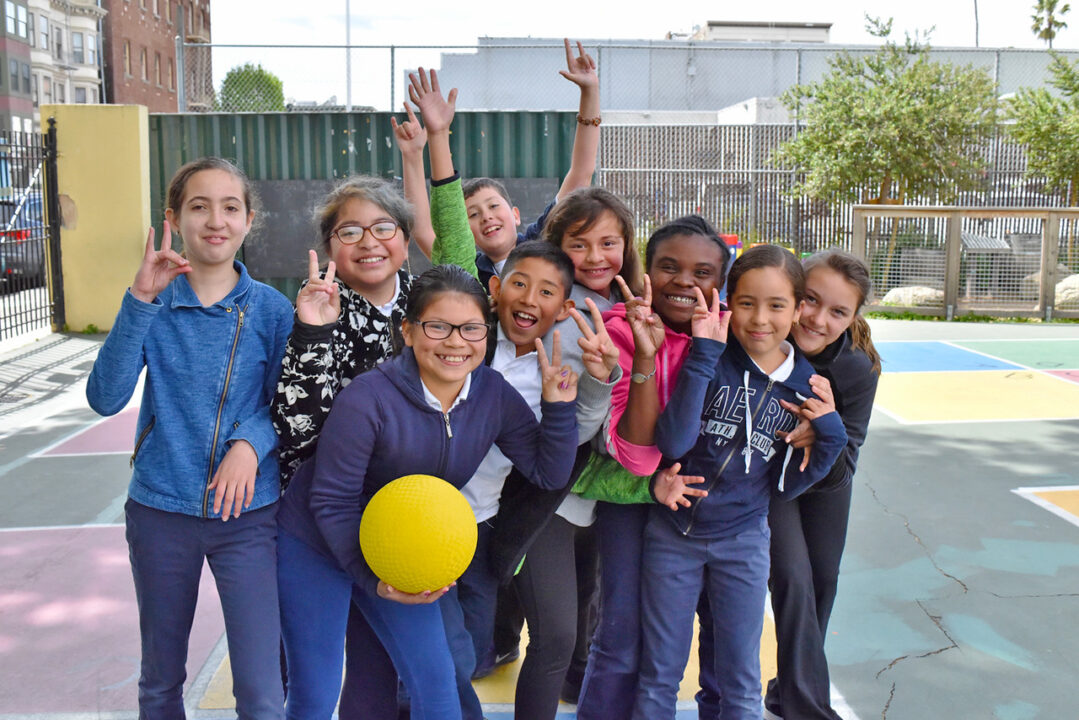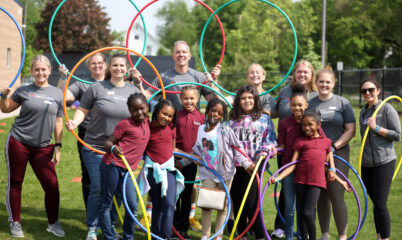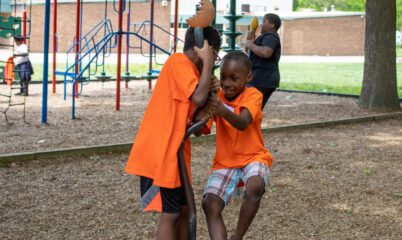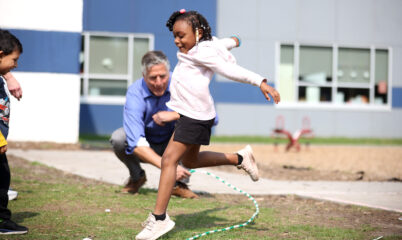When children feel included on the playground, it gives them the space to learn and grow in an environment that they know will celebrate their wins and encourage them to learn from their mistakes.
As recently highlighted on NBC, health experts are stressing inclusion for school children, which is why we’re focusing on it as our September SEL Skill of the Month. Building an inclusive recess yard is not just important, it’s crucial as students return to school after months of isolation and virtual learning.
So what does an inclusive recess yard look like? What does it sound like? How does it feel? There are ways to design your playground to promote inclusive play, and there are actionable steps and activities to nurture those inclusive spaces.
-
Learn every student’s name, how to pronounce it, and respect how they identify.
A student’s name is at the core of their identity, and pronouns matter even at a young age. Calling a student by name shows them that you see them and care, and encouraging students to learn each other’s names is the first step in creating an inclusive environment where every student feels like they belong. We know that learning names is hard, especially with lots of new friends on the playground. Try out the Movement Name Game for a fun twist on introductions with any age group, or a fast-paced tag style game, Name Touch, with older students.
-
Play “get to know you games”, especially at the beginning of the year.
Giving students the opportunity to talk about themselves and learn more about their classmates will naturally spark further conversation and connection, building an inclusive space that will only continue to grow throughout the year. I Love My Neighbor can be played with a variety of modifications for physical ability and space available, and Run If is a great option for younger grades.
-
Modify games so that every person on the playground feels welcome.
Every student is different and has varying ability levels, so creating modifications to celebrate the diversity of skillsets and identities is crucial to creating an inclusive recess. For example, adding an auditory component to Giants, Wizards, and Elves will allow students with visual impairments to still participate in and enjoy the game. Using the name “Hungry Fox” rather than “Mr. Fox” in the popular tag game promotes gender neutral language, adding to a more inclusive and welcoming playground.
-
Reframe what it means to be “out”.
When students are tagged “out” of a game, many lose interest or no longer feel included. With tag games such as Sharks and Minnows, promote a role switch if they are tagged, such as becoming “seaweed” or another shark rather than sitting out. In games where students must exit the game and wait in a line such as Switch or 4-Square, give students a new “job” while waiting in line such as “World’s Most Enthusiastic Cheerer” or “High-5 Giver”, thus promoting inclusion and investment in the game.
-
Use unique grouping techniques.
Rather than having team captains pick basketball or kickball teams, have students sound off as “apples” and “oranges” and split teams as such, or group based on birth month (“If your birthday is January through June, you’re on the left side of the field! July through December, you’re on the right!”) With larger groups, splitting them with unique terms such as Team Lions, Team Tigers, Team Bears, and Team Oh My promotes silliness and randomly splits students, and games such as 3-Line Basketball and 3-Lines Soccer similarly encourages inclusivity through the constant randomization of teams.
-
Know that you don’t have to be an expert!
Talk to caregivers, teachers, parents, and students themselves about how they think games and recess can be more inclusive. Or, invite students to get imaginative and creative and Invent a Game with clear rules, boundaries, and objectives, with a focus on promoting inclusion for all students. Put the learning in their hands!



